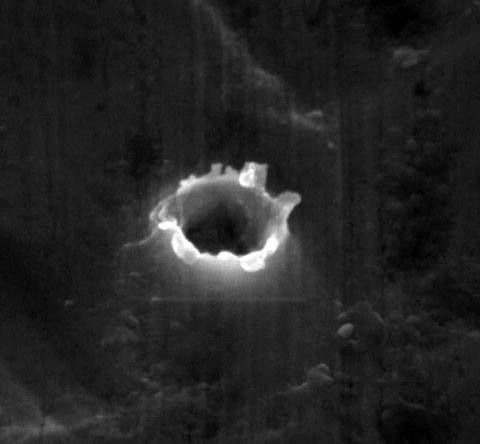Space Dust Impact

An electron microscope image of an impact crater found on an aluminum target aboard NASA's Stardust mission that returned to Earth in 2006. This image was featured in research published in January of 2012.
Image Credit and Copyright: C. Anders et al./PRL/APS
December 8, 2014
Space can be an incredibly dangerous place — often due to dangers invisible to the naked eye. Radiation, for instance, can be a threat to astronauts aboard the International Space Station, requiring significant safeguards.
The image above, however, reveals the impact of another invisible threat: space dust. Whizzing by at speeds exceeding 10 kilometers per seconds, extremely small dust particles can pack quite a punch against spacecraft. The dust impact crater seen above stems from NASA's Stardust mission — a space probe tasked with collecting dust samples from behind a comet.
Currently, NASA's New Horizons spacecraft is also taking hits from space dust as it speeds toward Pluto and the Kuiper Belt. During its travels, the spacecraft's Student Dust Counter has been barraged with tiny dust particles. After a particle hits the detector's surface, the instrument can estimate the size and velocity of an impacting particle based on an electrical response emanating from impact craters.
For the research paper containing the above image, Christian Anders and his team of researchers created complex computer simulations of particle impacts ranging from the millimeter range to the nanometer range. They found that impact craters may form quite differently at the small end of this range than previously expected.














